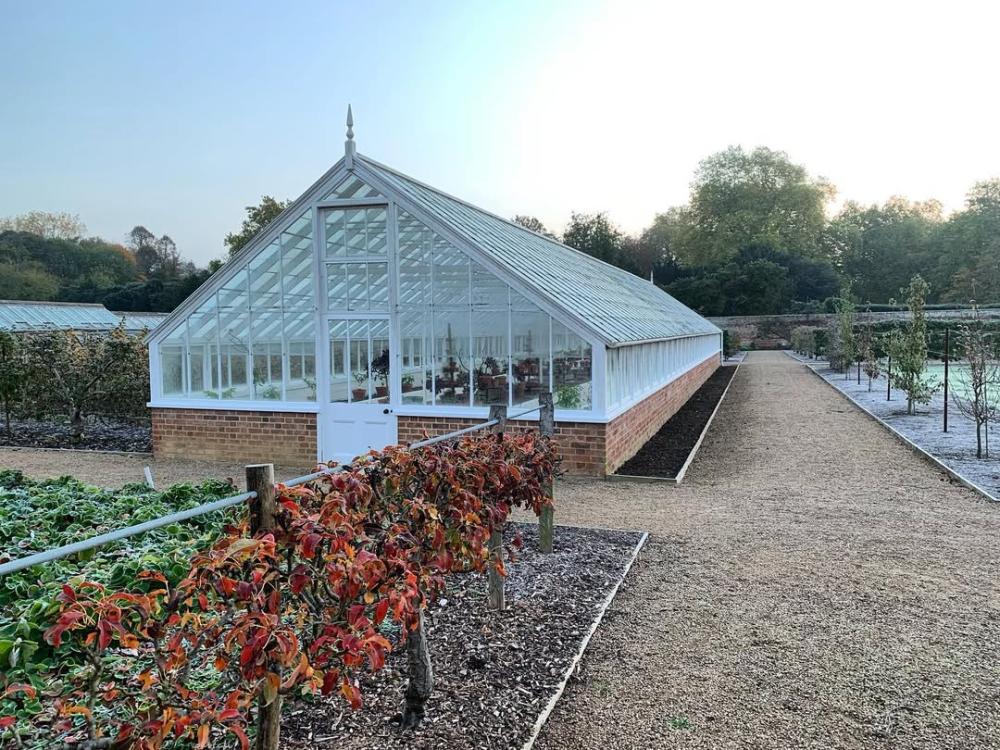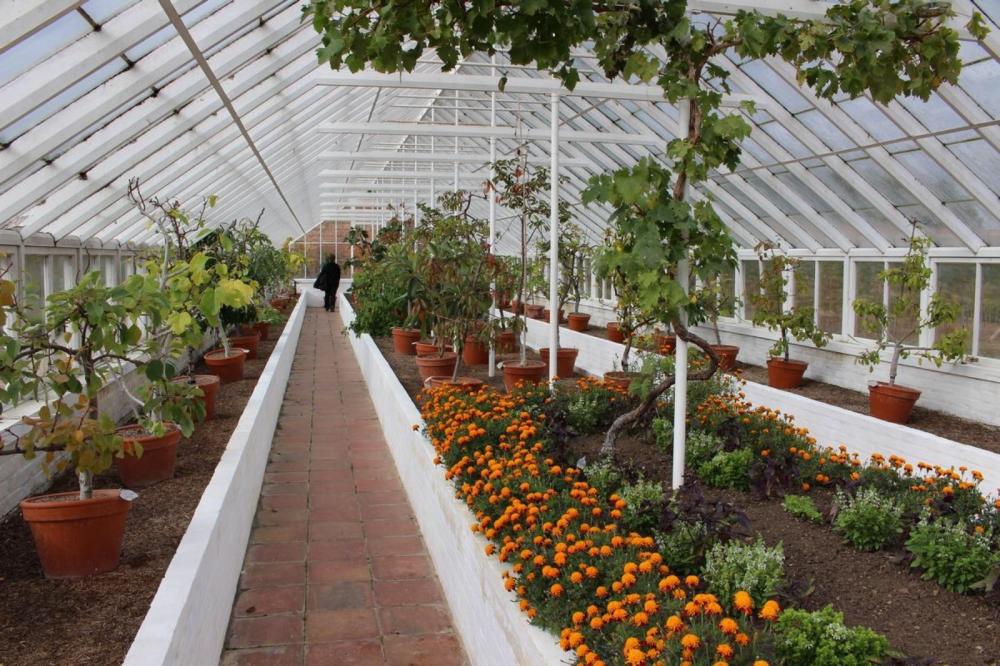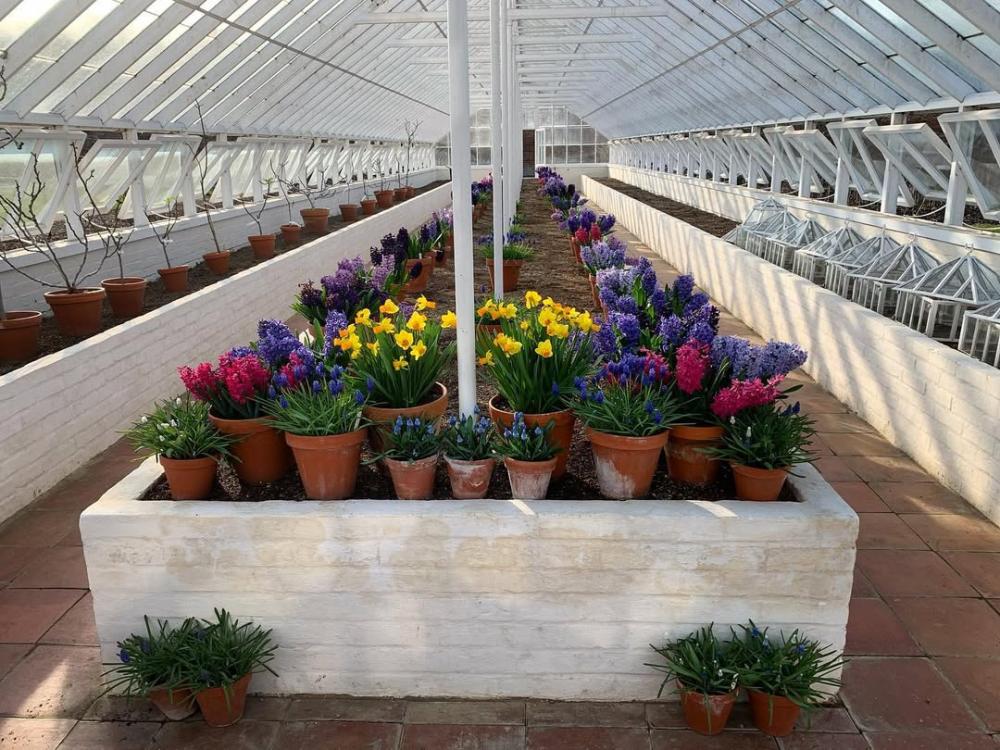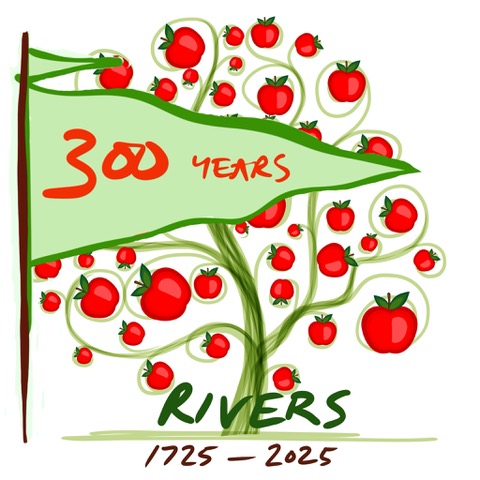The Orchard House Today
Written by Gemma Sturges
Published on April 1, 2025.
Return to the contents page.
The Article that follows was contributed to the Rivers 300 website by Gemma Sturges, the Kitchen Garden Supervisor at Audley End House and Gardens: she writes of her experiences in managing a nineteenth century artefact in a twenty-first century climate. For those who know the Rivers Heritage here in Sawbridgeworth, walking into that Orchard House takes us into the reality of the Thomas Rivers design we’ve found before only in the pages of his book.
One of the most compelling challenges in preserving horticultural traditions in a historical setting is the ability to produce seasonal crops to the same high standards set during the Victorian Era. This involves using heritage varieties and techniques while simultaneously adapting to the realities of climate change through modern, sustainable practices that benefit the environment. At the Audley End Kitchen Garden, we strive to achieve this delicate balance, as the garden’s purpose has evolved, but our mission remains steadfast: to share the history of Victorian gardening while working in harmony with nature.
The walled Kitchen Garden is one of horticulture’s grandest stages—an environment that once fuelled the production of fruit and vegetables for a grand country estate. It was a testament to industriousness, where crops were carefully manipulated within a short growing season to yield a seemingly endless supply for the household and its inhabitants. Today, we continue to manage these spaces with the same spirit of resourcefulness.
At Audley End, the Kitchen Garden was a crucial part of this horticultural success. Only the finest produce was deemed worthy of the dining table, a feat made possible by the skill of the Head Gardener and their dedicated team. As modern horticulturists, we honour their legacy by following in their footsteps—though, I must admit, with more practical footwear!
Since I began working in this remarkable microclimate in 2011, first as a student gardener under the guidance of the then-Head Gardener Mike Thurlow, and later as Kitchen Garden Supervisor, I've been part of an incredible team working to preserve this historical space. One of the ongoing challenges has been how best to celebrate the work of horticultural heroes like Thomas Rivers, who played a pivotal role in fruit cultivation during the Victorian period. Many of the fruit varieties he introduced are still cultivated and harvested in the walled garden today.
When I first encountered the Rivers Orchard House at Audley End—a faithful 2001 replica of an 1856 structure originally built in the walled garden—I was struck by the sight. The Orchard House, with its large span roof, contained a range of fruits including peaches, nectarines, plums, cherries, figs, apples, and pears, all grown in clay pots as per Rivers’ 1858 publication. I couldn't help but think, "Poor trees," as they seemed cramped in their small containers. Yet, this method was intended to improve the fruiting cycle and root systems. Some trees thrived, producing abundant fruit, while others struggled. I even witnessed a particularly vigorous fig, sprawling across the glasshouse from one raised bed to the other—a sight both impressive and not quite in line with Rivers’ original plan!
Over the years, through trial and error, we've made adjustments to align more closely with Rivers’ methods. However, the harsh realities of climate change, a shrinking workforce, and the growing demands of maintaining a public-facing garden have led us to reassess some of our original ideals. While we still cultivate traditional fruits like figs and apricots in clay pots, we have expanded our focus to include more resilient plants, such as chili peppers and the unique Chilean guava berry (Ugni molinae), which is well-suited to the heat. We've even begun experimenting with Aronia × prunifolia, also known as chokeberry, which makes excellent teas, jams, and syrups.
As we face the challenges of limited ventilation and rising temperatures within the Orchard House—conditions that favour pests like red spider mites, scale insects, and mealybugs—maintaining the delicate balance of traditional horticulture while adapting to modern needs becomes increasingly difficult. Replacing expensive fruit trees and managing pest control in such an inhospitable environment is no small task, and we must carefully consider the sustainability of continuing with this method.
Nevertheless, we remain committed to blending the past with the present. While the Orchard House may not be an exact replica of its Victorian counterpart, we strive to honour its legacy by experimenting with new ideas, such as incorporating more heat-tolerant plants. The result is a beautiful collection of fruits that are both traditional and innovative, offering a glimpse into the future of the garden while staying true to its roots.
The journey of managing this historic garden has been one of constant learning and discovery. Diving deep into the history of Thomas Rivers and his fruit cultivars has been a fascinating adventure, and we are fortunate to be able to celebrate his contributions within the walled garden at Audley End. Although the Orchard House may have undergone several transformations, it remains a space of historical significance and a testament to the ingenuity of Victorian gardeners.
Managing a historic garden comes with many challenges, particularly when it comes to balancing period authenticity with the need for evolution. While we respect the traditions and techniques of those who came before us, we must also embrace the idea that horticultural practices should evolve in response to changing conditions. The long-term sustainability of both the plants and the gardeners who care for them depends on this adaptability.
Though you may not encounter an apple variety named ‘Melon,’ or a ‘Duke of York’ Peach tree in the Orchard House, stepping into this space is like taking a journey back in time. The sheer scale of the glasshouse and the extensive production it once supported offers a tangible connection to the past. The contents may have changed over the years, but the spirit of innovation and progress remains. Who knows how this space will evolve in the future? Only time will tell.

The present day Orchard House at Audley End in Winter. |

The inside of the Orchard House at Audley End. |

Bulb display inside the Audley End Orchard House. |


